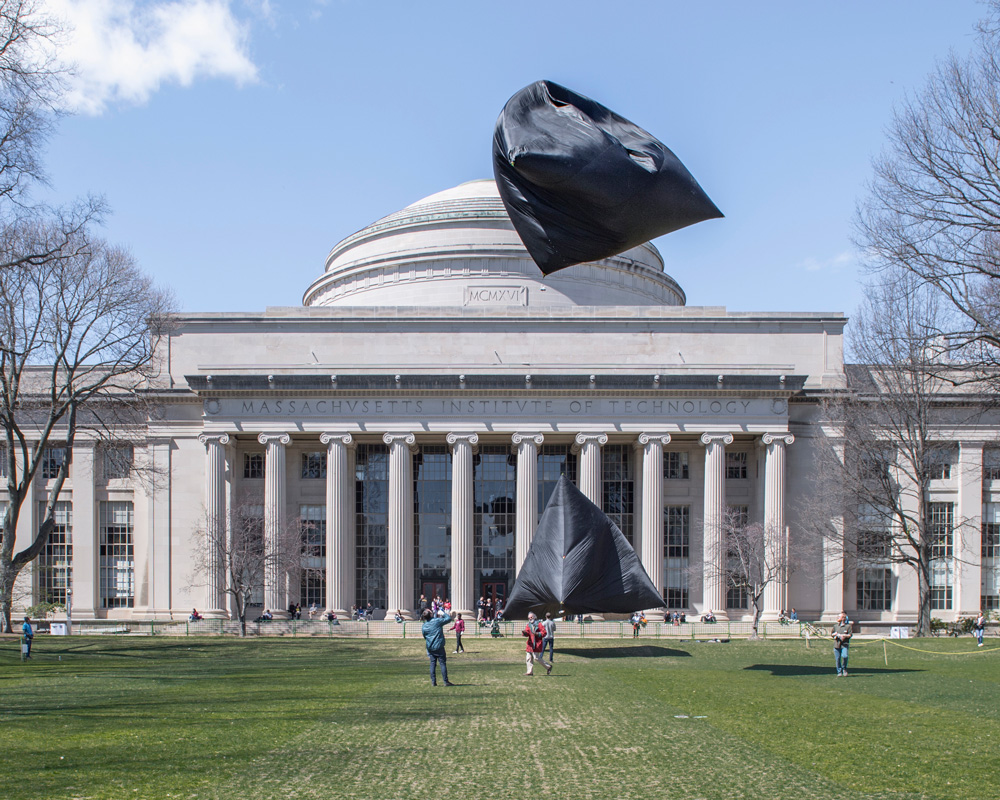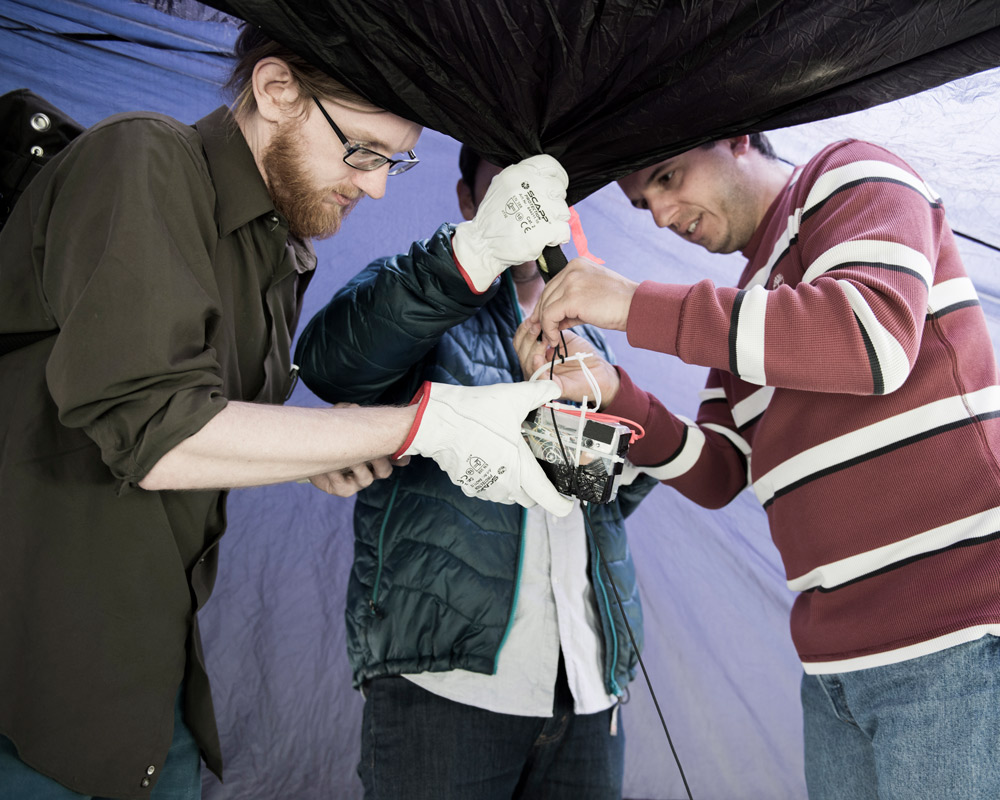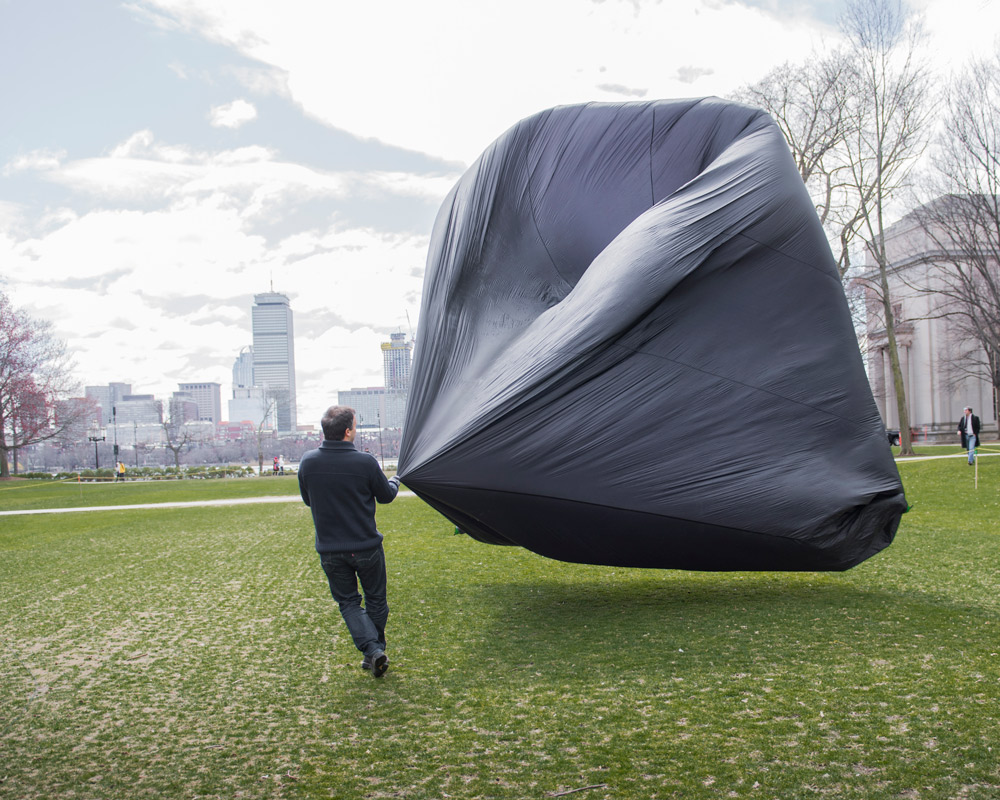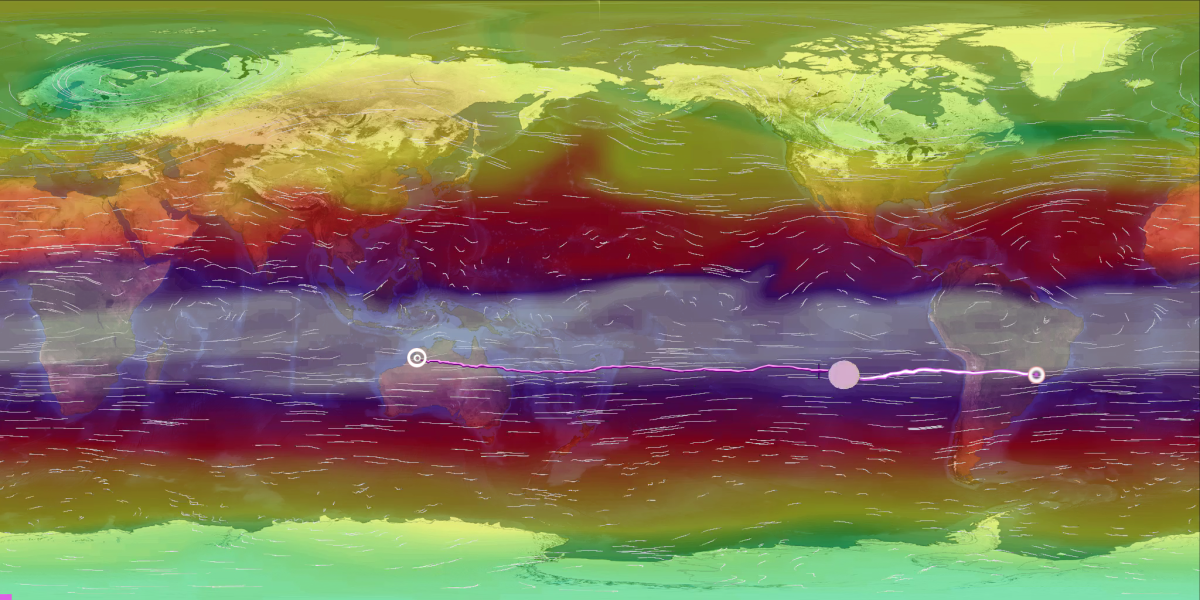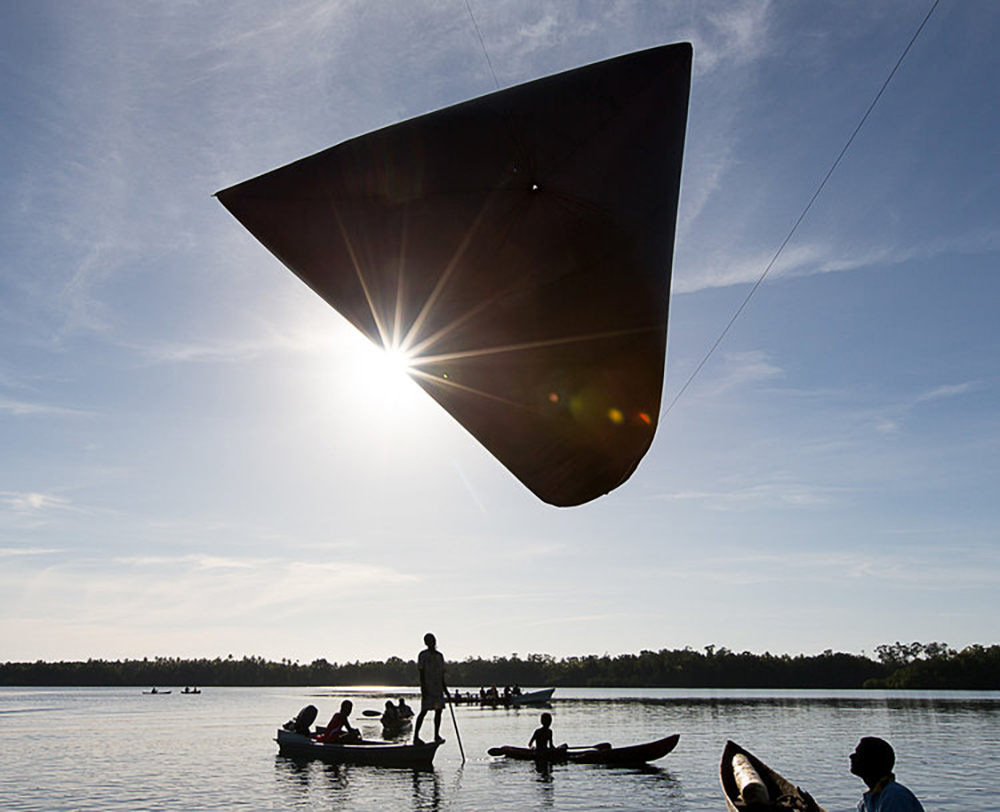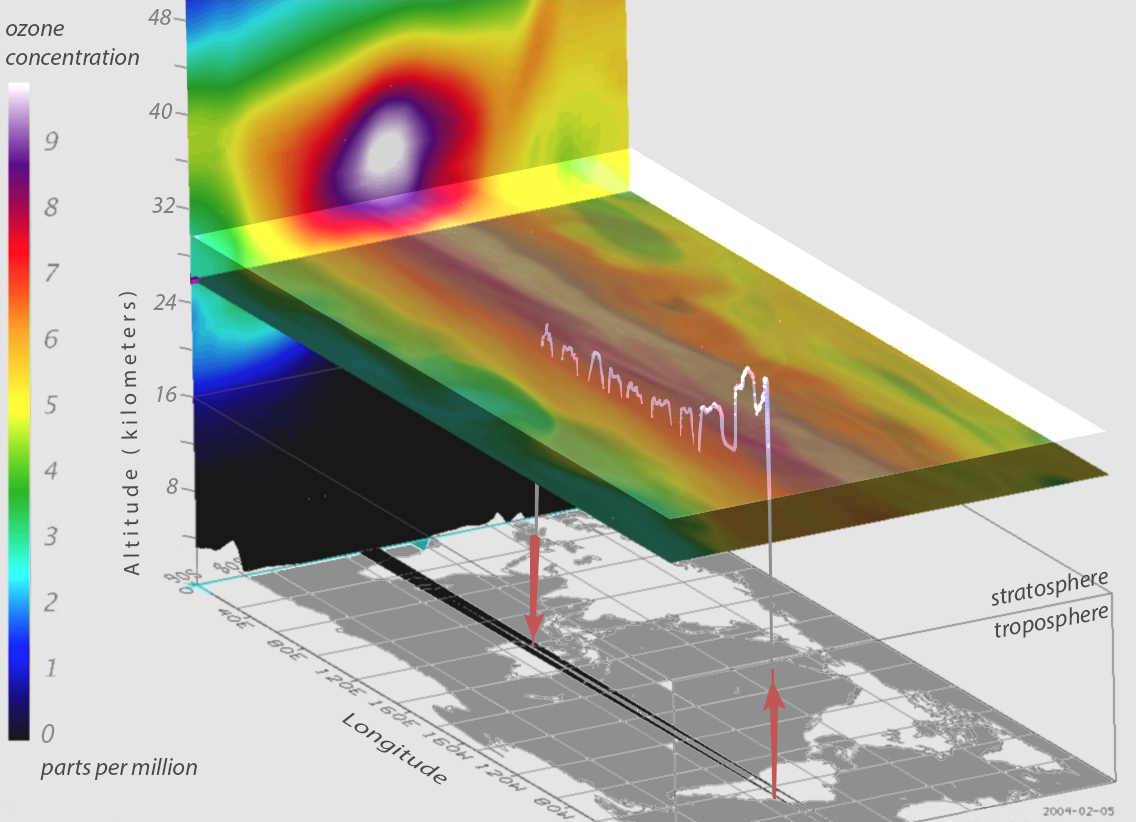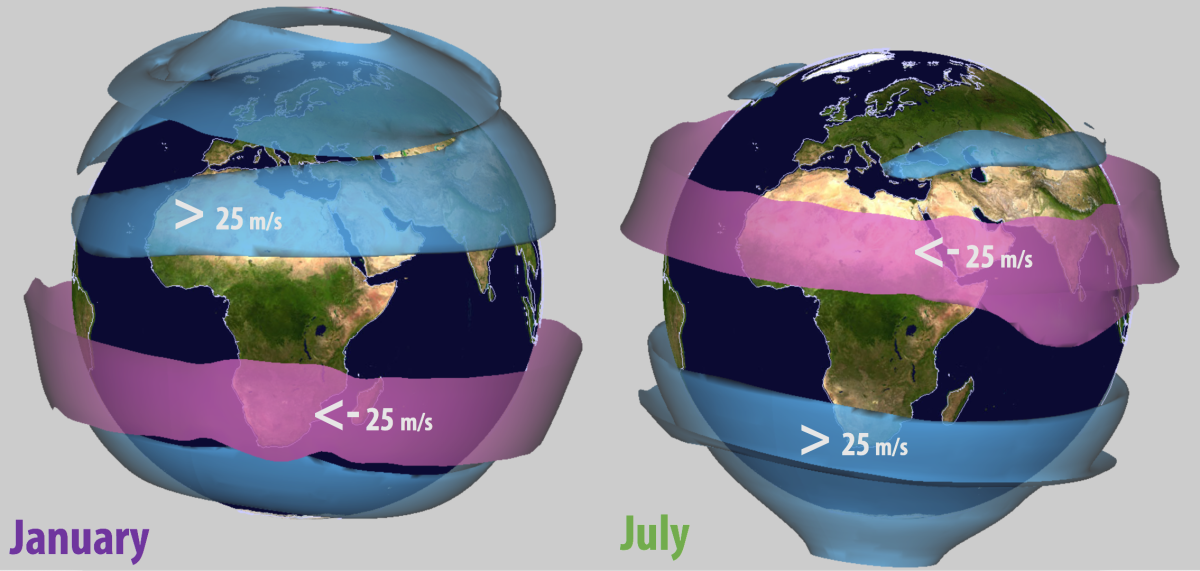Aerocene is a multi-disciplinary project that foregrounds the artistic and scientific exploration of environmental issues.

TOMÁS SARACENO
Throughout his artistic career, Tomás Saraceno has proposed speculative models for alternate ways of living in an environmentally sustainable future; known collectively as Cloud Cities, these artworks are a visionary conception of floating assemblies, which he has exhibited in multiple forms for more than 15 years.
EXPERIMENTS IN FOSSIL-FREE FLIGHT
In a series of experiments with air-fueled sculptures begun in 2003, Saraceno has envisioned a future beyond the Anthropocene, the current geological era in which human activity has had a dominant impact upon the Earth. The Aerocene project is the latest development in this endeavor, a series of art installations and experiments designed to capture the public’s imagination with fossil-free flight. The floating sculptures, made of silver and transparent Mylar, are held aloft by heat from the sun and infrared radiation from the Earth’s surface, and the plan is for them to be navigated solely by atmospheric currents. The artist and his team have conducted a number of tethered and untethered test flights in Poland, Germany, the Solomon Islands, Bolivia and the White Sands desert in New Mexico.
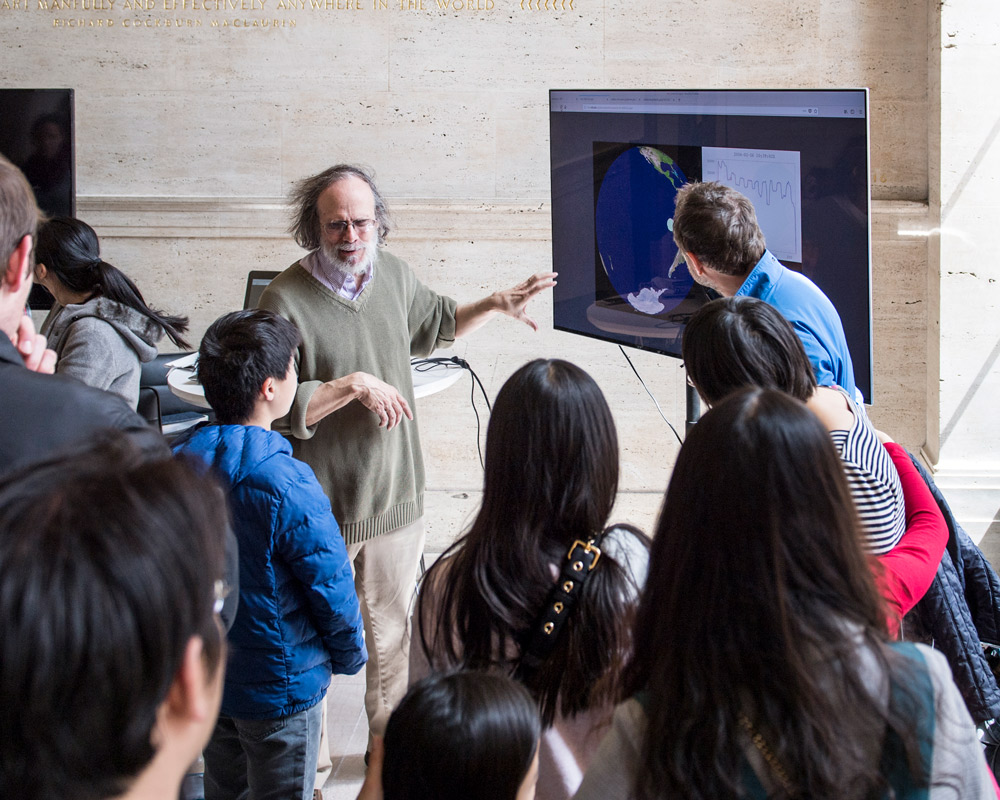
MIT SCIENTISTS – ILLARI, FLIERL and McKENNA
Saraceno was the inaugural Visiting Artist at the MIT Center for Art, Science & Technology (CAST) in 2012. At that time, he began an ongoing collaboration with meteorologist Lodovica Illari in the MIT Department of Earth, Atmospheric and Planetary Sciences (EAPS). She and her team agreed to explore whether Saraceno’s sculptures could circumnavigate the earth without the use of helium, batteries or solar panels. The MIT EAPS team, including oceanographer Glenn Flierl and research assistant Bill McKenna, computed flight paths for balloons floating for several weeks at particular heights (or undergoing day-night cycles of rising and falling) and examined data acquired from MIR (Montgolfière InfraRouge) solar balloon flights conducted by the Centre Nationale d’Etudes Spatiales (CNES), where Saraceno was in residence.
THE FLOAT PREDICTOR
The collaboration was presented at the Grand Palais in Paris in conjunction with the COP21 Paris Climate Change conference in December, 2015 and at The World Economic Forum in Davos in January, 2017. For the latter, the EAPS team has created Float Predictor, an interactive web interface simulating the evolving wind patterns around the globe, based on wind forecast data from the U.S. National Oceanic and Atmospheric Administration. The Float Predictor allows participants to rotate and tilt the globe with a touchscreen and create their own flight trajectories for the sculptures. These tools allow exploration in both an imaginative and scientific mode. The MIT team hopes that the public will develop an appreciation for the subtleties of atmospheric science and climate conditions alongside the beauty of Saraceno’s floating sculptures.
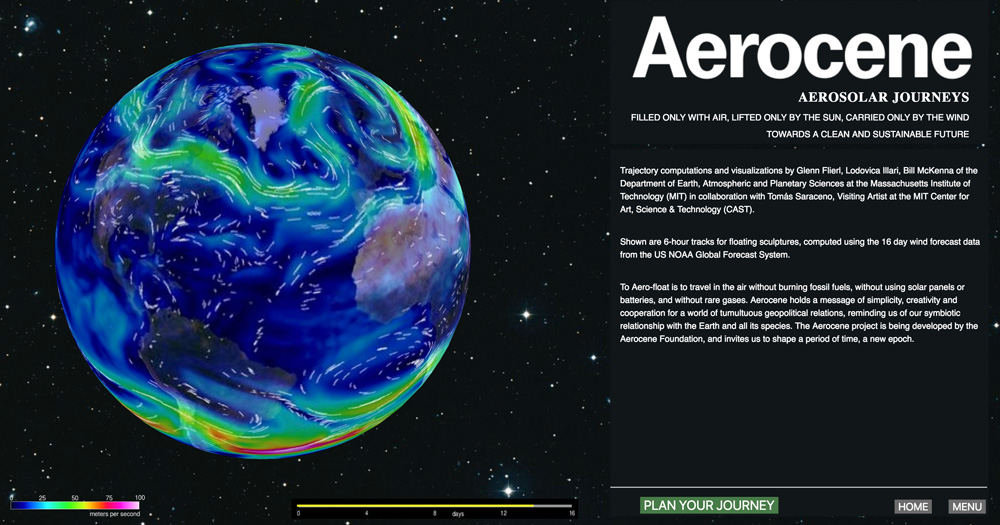
PAST EVENTS
Aerocene and the Future in a Fossil-Free World
Thursday, April 19, 2018
6:00-7:30pm / Panel Discussion
MIT Lecture Hall 10-250, 222 Memorial Drive, Cambridge, MA 02139
7:30pm / Reception
MIT Memorial Lobby, Building 10, 222 Memorial Drive, Cambridge, MA 02139
MIT Visiting Artist Tomás Saraceno, MIT Senior Lecturer in Meteorology Lodovica Illari, Professor of Atmospheric Chemistry Daniel Cziczo and Morningstar Professor of Physics Robert Jaffe discuss how the solar-powered sculptures of the Aerocene project inspire us to think of a different way to interact with the environment. A panel discussion will be moderated by Professor John Fernández, director of MIT’s Environmental Solutions Initiative. Reception to follow in Lobby 10.
Aerocene Explorer Performance & Interactive Display with MIT Visiting Artist Tomás Saraceno and EAPS Scientists
April 20 & 21, 2018 / 11:00am-2:00pm
MIT Killian Court and MIT Memorial Lobby, Building 10
222 Memorial Drive, Cambridge, MA 02139
Take part in flights of solar sculptures that become buoyant and lift off the ground powered only by the heat of the sun. Use them to take measurements of weather variables and pollutants in the atmosphere’s boundary layer. Learn more about atmospheric winds that make sustainable flight possible through an interactive display in Memorial Lobby. Bring a picnic lunch!
Presented in conjunction with the Climate Changed Symposium and Cambridge Science Festival.

